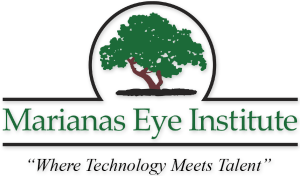Saipan Eye Clinic Combats Cataract Blindness in Africa
Dr. David Khorram, Marianas Eye Institute’s co-founder, travelled on behalf of the Saipan eye clinic to Ghana, in Africa, to provide needed cataract surgery. Dr. Khorram was accompanied by his 16 year-old son, Arman, who also participated as a volunteer in the project. The duo were Global Impact Fellows with the non-profit organization, Unite for Sight, based out of New Haven, Connecticut. Global Impact Fellows undergo extensive training on providing care in rural and under-served areas. “The training was a refresher of sorts for me,” said Dr. Khorram, who has significant experience as a volunteer eye surgeon is such settings. “However, it was all new for Arman, and it prepared him well for the time we spent in the villages in Ghana.”
Large Scale Village Cataract Screening
On the ground in Ghana, the Khorram’s were joined by three other volunteers, all university students, who had come to spend some weeks in Ghana as part of the Unite for Sight team. The team members, accompanied by staff from the Crystal Eye Clinic in Accra, the capital of Ghana, traveled each day to outlying villages and conducted large scale community screening campaigns to identify those with vision problems. In addition, the team members, including those from the Saipan eye clinic, gathered statistics to be used in research to improve care in the region. They saw up to 200 patients per day. “The screenings were done in partnership with local village organizations who announced days ahead of time that we were arriving,” Khorram explained. “Because of the absence of hospitals and health centers, we used local schools or community centers to perform the exams. The university volunteers and Arman checked vision, while those of us with medical training, conducted the formal eye exams.”
Cataract Surgery in Ghana Different than Saipan
On some days while the team members were in the outlying villages, Dr. Khorram joined local ophthalmologists from the Crystal Eye Clinic to help clear the backlog of cataract surgery. “There are a limited number of ophthalmologists in the country,” said Khorram. “Not enough to serve the population. So volunteer ophthalmologists are needed to perform cataract surgery.” Dr. Khorram explained that while cataract surgery is the most common eye surgery performed on Saipan, the surgery is a much different technique than the one used in Ghana. “At Marianas Eye Institute, we use the most advanced techniques for cataract surgery, which requires expensive high-tech equipment. In most places in the world, this equipment is too expensive, so we use a technique that has been especially developed for these settings,” the Saipan eye clinic surgeon explained.
Cataract and Diabetes
Cataract is the world’s leading cause of reversible blindness, affecting some 20 million people globally. Cataracts are also the leading cause of vision loss in Saipan. The World Health Organization has identified cataracts as a priority eye disease. It is also a priority at Marianas Eye Institute. Cataracts is a clouding of the natural lens inside the eye, which causes blurred vision. It occurs most commonly with aging, and with diabetes. “Because Marianas Eye Institute is the major center for treatment of diabetic eye disease on Saipan, we also treat a lot of cataracts. Cataract surgery, with today’s modern technique of phacoemulsification, can be performed in under 20 minutes, and the same day, the patient can see again,” explained Russ Quinn, the Saipan eye clinic’s CEO. Dr. Dennis WIlliams, a renown ophthalmologist who is listed in Best Eye Doctors in America, performs the high-tech cataract surgery on Saipan, while Dr. Khorram now spends most of his professional time as an international volunteer eye surgeon.
Marianas Eye Patients Contribute
“The trip to Ghana was a truly memorable experience,” said Dr. Khorram. “Like Saipan, the people were kind and appreciative, and full of laughter. Arman and I felt right at home there,” he said. Marianas Eye Institute continues to support efforts to combat blindness and suffering. “While our priority for eye care will always be Saipan, Tinian, and Rota, we feel a responsibility to help those beyond the shores of the Mariana Islands,” said Quinn. “It’s great to participate in these projects, and all everyone who is a patient at Marianas Eye Institute, helps make our support to the global fight against blindness possible, so we thank you all, ” he said.
Marianas Eye Institute is know as a regional leader in eye care, providing total eye care for the family, including express glasses, contact lenses, medical eye care, surgery and laser. Marianas Eye Institute is staffed by Dr. Dennis Williams, who has been listed in “America’s Top Ophthalmologists,” and Dr. Mark Robertson, a magna cum laude graduate, along with eight other highly talented and nationally certified eye care technicians, opticians, and contact lens technicians. Located on Beach Road in Garapan, across 13 Fishermen Monument, the Saipan eye clinic is open Monday through Saturday and accepts new patients as well as walk-ins. Anyone interested in supporting the Saipan eye clinic’s global outreach program can call 235-9090.







